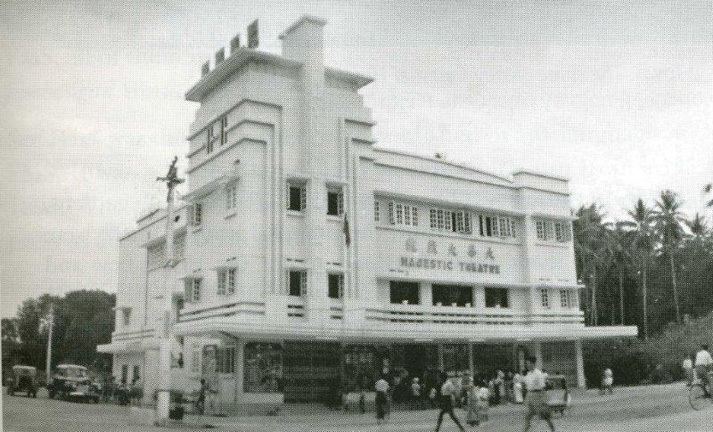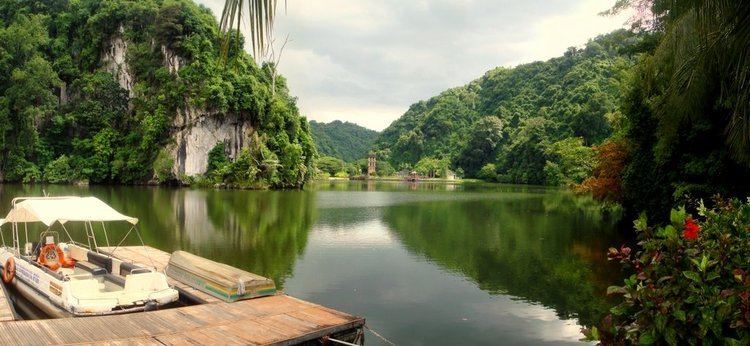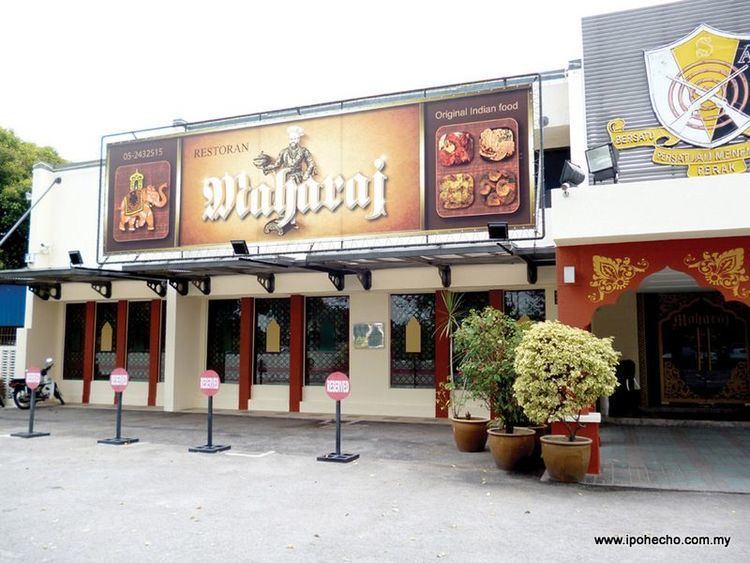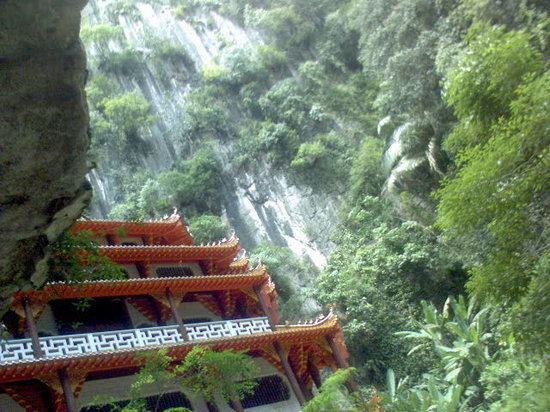Country Malaysia Area 643 km2 Mayor Datuk Harun Rawi | ||
 | ||
Colleges and Universities Ungku Omar Polytechnic, Royal College of Medicine Perak, Ipoh Nursing College Points of interest Lost World of Tambun, Ipoh railway station, Gua Tempurung, Kellies Castle, Birch Memorial Clock Tower | ||
Map of Ipoh
Ipoh is the capital city of the Malaysian state of Perak. Located by the Kinta River, it is nearly 180 km (110 mi) north of Kuala Lumpur and 123 km (76 mi) southeast of George Town in neighbouring Penang. As of 2010, Ipoh contained a population of 657,892, making it the third largest city in Malaysia by population.
Contents
- Map of Ipoh
- Its really all about food ipoh part 1
- Ipoh eating places
- History
- Topography
- Climate
- Limestone caves mountains and lakes
- Cuisine
- Economy
- The Old Town
- The New Town
- Sports
- Governance
- Demographics
- Toponymy
- Transport
- Education
- Notable people
- Film and television
- Sister cities
- Top place to eat food and drink in jalan ipoh kl
- Kampar ipoh food walk
- Hakka noodles restaurant paris hugh low street food hunt p1 gerryko malaysia
- References

Originally a village, Ipoh began to grow rapidly in the 1880s after huge deposits of tin were discovered within its vicinity. By 1895, it was the second largest town within the Federated Malay States, which also consisted of Selangor, Negeri Sembilan and Pahang. Ipoh was declared a city in 1988. However, following the depletion of its tin deposits and the collapse of tin prices in the 1970s, the city suffered decades of decline and neglect.

In recent years, Ipoh's popularity as a tourist destination has been significantly boosted by efforts to conserve its British colonial-era architecture. The city is also well-known for its cuisine and natural attractions, such as its limestone hills and caves within which Buddhist temples were built. In addition, Ipoh has managed to maintain its reputation as one of the cleanest cities in Malaysia.

Ipoh's location between Kuala Lumpur and George Town has made it a major land transportation hub within West Malaysia, with both the Malayan Railway's West Coast Line and the North-South Expressway cutting through the city. Aside from the land transportation links, Ipoh is also served by the Sultan Azlan Shah Airport.
Its really all about food ipoh part 1
Ipoh eating places
History
Ipoh grew out from the Malay village of Palau along the banks of the Kinta River in the 1880s. Its geographic location in the rich tin-bearing valley of the Kinta River made it a natural centre of growth.
The Great Fire of Ipoh in 1892 destroyed over half the town, but also presented an opportunity to rebuild the town in a more orderly grid pattern. Ipoh was subsequently rebuilt in time for the second tin rush and grew rapidly as a result of the booming tin mining industry, particularly in the 1920s and 1930s.
A local Hakka miner, millionaire Yau Tet Shin, started developing a large tract of the town in the early 1930s, today known as the 'New Town', from the eastern bank of the Kinta River to Greentown. In 1937, Ipoh was made the capital of Perak, replacing Taiping.
Ipoh was invaded by the Japanese on 15 December 1941. In March 1942, the Japanese Civil Administration or Perak Shu Seicho was set up at the St. Michael's Institution. After the liberation of Malaya by British forces, Ipoh remained the capital of Perak to this day.
The decline of the tin mining industry during the latter half of the 20th century caused the growth of Ipoh to stagnate. With the closure of the tin mines, its urban population was forced to seek employment in other cities within Malaysia. In spite of this, Ipoh remains one of the largest cities in Malaysia in terms of population, with tourism now a main driver of the city's economy.
Ipoh gained Municipal status in 1962, and in 1988, was declared a city by the then Sultan of Perak, Sultan Azlan Shah.
Topography
Ipoh is in the state of Perak, which is in the northern part of Peninsular Malaysia. The city is in the middle of the Kinta Valley, on the bank of the Kinta River and the confluence of smaller rivers, Sungai Pinji and Sungai Pari. The city is surrounded by limestone hills, which can be found around suburban areas to the northeast, east and southeast.
The Kledang mountain range stretches from the north to the west of the city. This range runs parallel to the Bintang mountain range with the Perak River flowing on its left bank and the Kinta River to its right. This range is interrupted to the north of Ipoh by a tributary of the Perak River called the Pelus River, which is sourced from the Titiwangsa mountain range, which runs to the east of Ipoh.
Climate
Ipoh features a tropical rainforest climate. Temperatures are about the same throughout the year, showing little variation. The city's average temperature is 28 °C (82 °F). Ipoh sees high precipitation throughout the year with an average of 200 mm (7.9 in) of rain each month and averaging 2,427.9 mm (95.59 in) of rain per year. The wettest month is October where on average 297.2 mm (11.70 in) of rain is seen. Ipoh's driest month is January which has 132.3 mm (5.21 in) of rain fall on average.
Limestone caves, mountains and lakes
Kek Lok Tong (Chinese: 極樂洞; Cavern of Utmost Happiness) is a cave temple that lies on the other side of the same hill as Sam Poh Tong. It is accessible through the Gunung Rapat housing area. It has a clean, quiet and cool environment. Other cave temples in Ipoh include Ling Sen Tong, Nan Tian Tong, Kwan Yin Tong and Perak Tong.
Limestone hills extend 20 km (12 mi) north of Ipoh and 20 km (12 mi) to the south. There are many caves in these hills; cave temples are built in some. Gua Tempurung, near Gopeng south of Ipoh, is a show cave open to the public. It is popular among spelunkers. More than 3 km (1.9 mi) long, it is one of the longest caves in Peninsula Malaysia. Part of it has been developed as a show cave with electric lighting and walkways, and there are tours of different lengths and difficulty. A fine river cave, the river passage runs about 1.6 km (0.99 mi) through the hill. There are five very large chambers and some stalactites and stalagmites.
Lakes in Ipoh include the one at Gunung Lang.
Cuisine
Ipoh has a vibrant food scene with a vast proliferation of hawker centres and restaurants. It is well known for dishes such as "Sar Hor Fun" (Chinese: 沙河粉) a complete one-dish rice noodle meal with prawn, meat, fish, vegetables and a savoury sauce. Other dishes from Ipoh include "Hor Hee", flat white rice noodles served with fish cakes and/or fish balls, "Nga Choi Kai" (Chinese: 芽菜鸡), chicken with soy sauce and beansprouts topped with pepper,"Kai Shi Hor Fun" (Chinese: 鸡丝河粉) rice noodles with Chicken, "Hakka Mee" (Chinese: 客家麵), yellow rice noodles served with mince meat (pork) sauce, and Ipoh's famous pastry "Heong Peng" (Chinese: 香餅), literally translated to "fragrant biscuit". The city is well known in Malaysia for its "Ipoh white coffee" where the coffee beans are roasted with palm-oil margarine and the resulting coffee is served with condensed milk. Ipoh is also famous for its fresh fruits such as Pomelo, Durian and Seedless Guava.
In recent years Ipoh has seen an increase in international restaurants, bars and gastropubs have become popular with locals and tourists.
Economy
Ipoh was once, one of the richest cities in Malaysia as well as South East Asia back in the days when tin was king. During the 1980s when tin prices collapsed, the economy of Ipoh was hit particularly hard. However, recently the city gain some momentum. By 2017, the city will open the first Movie Animation Theme Park (MAPS), which is the first ever in South East Asia. Tourism is booming in the city, and many shops in old town Ipoh is being transform into chic café. The city of Ipoh also host some big multi national corporations. Kuala Lumpur Kepong (KLK) Berhad, a palm oil company, which is also among the top 15 biggest companies in Malaysia (By revenue) has its headquarters in Ipoh. Batu Kawan Berhad (Which is the biggest shareholder of KLK), an investment company also has its headquarters in Malaysia. Hovid Berhad, a pharmaceutical company, which is also the first Malaysian companies to introduce generic drugs overseas also has its headquarters in Ipoh. Ipoh also is well known for its white coffee. Old Town Berhad, which is a food & beverage public listed company, specializing in white coffee has its headquarters in Ipoh. There are a few other public listed companies in Ipoh such as Perak Transit Berhad, Tasek Cement Berhad, DKLS Industries Berhad, Wellcall Holding Berhad, Rubberex Berhad, Perak Corp, etc. Ipoh also host some foreign multi national companies Malaysian headquarters. Some of the foreign MNC's in Ipoh is, Finisar, Voith, ITL Asia pacific, Sagami Manufacturers, etc.
The Old Town
The Old Town is west of the Kinta River. There is a vibrant commercial district with many historical 'shop-houses' centred around Leech Street (Chinese: 烈治街; now Jalan Bandar Timah). Other notable features include:
The New Town
The so-called New Town, to the east of the Kinta River, was developed by Yau Tet Shin around 1908. The New Town houses the Perak Medical University and Ipoh City Hall building, among others. There are numerous shops, shopping malls, and hotels.
D. R. Seenivasagam Park (Coronation Park), located in the heart of Ipoh (New Town), is known for its scenic beauty and recreational facilities. It comprises recreational fields, an artificial lake filled with fish, a nursery for potted plants and a children's traffic playground. The latest addition is the newly landscaped Japanese garden featuring a Japanese carp pond.
Sports
For golf, the courses are the Royal Perak Golf Club off Jalan Sultan Azlan Shah (Tiger Lane), the Meru Golf Club in Jelapang, and Clearwater Sanctuary Golf Club en route to Batu Gajah.
Other sports venues include the Kilat Club in Pasir Pinji, Ipoh Field (Padang Ipoh) in the Old Town, the Polo Grounds, and the Iskandar Polo Club, in Ampang Baru.
The Sultan Azlan Shah Cup is an annual international men's field hockey tournament held in Ipoh.
Ipoh has a fully equipped sports complex known as Kompleks Sukan MBI or MBI Sports Complex.
Among the facilities located within the Complex is the Stadium Perak or Perak Stadium. Perak Stadium is the home of Perak The Bos Gaurus who playing in Malaysia Super League.
Governance
The Ipoh City Council governs the city. Datuk Zamri Man, appointed in August 2015, is the current mayor of Ipoh.
Ipoh is divided into two parliamentary constituencies: Ipoh Barat (Ipoh West) and Ipoh Timur (Ipoh East). The parliamentary seat for Ipoh Timur is held by DAP Representative, Su Keong Siong, which was formerly held by Lim Kit Siang while the seat for Ipoh Barat is held by fellow DAP leader, M. Kulasegaran.
Demographics
Ipoh remains one of Malaysia's largest cities. It is the third largest city in Malaysia. As of 2010, the municipal area of Ipoh has a population of 657,892. It ranks as the seventh most populous urban centre in Malaysia (2010).
The following is based on Department of Statistics Malaysia 2010 census.
Toponymy
The name Ipoh is derived from a local tree, Pohon Epu or now more commonly known as Pokok Ipoh. The sap of this plant is poisonous and was used by Orang Asli (indigenous peoples in Malay) to coat the tips of the darts of their blowpipes for hunting.
Transport
Education
This is a list of schools in Ipoh, Perak.
Notable people
Film and Television:
Music:
Sports: (Badminton):
Sports (Football):
Sports (Others):
Business:
Politics:
Historical:
Science and technology:
Other:
Film and television
Movies filmed in Ipoh include:
Sister cities
Ipoh currently has two sister cities:
